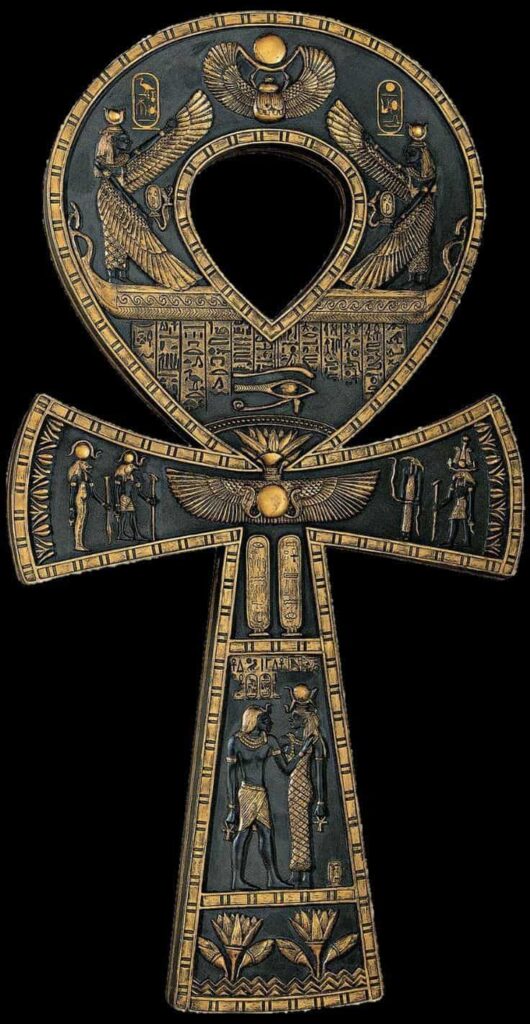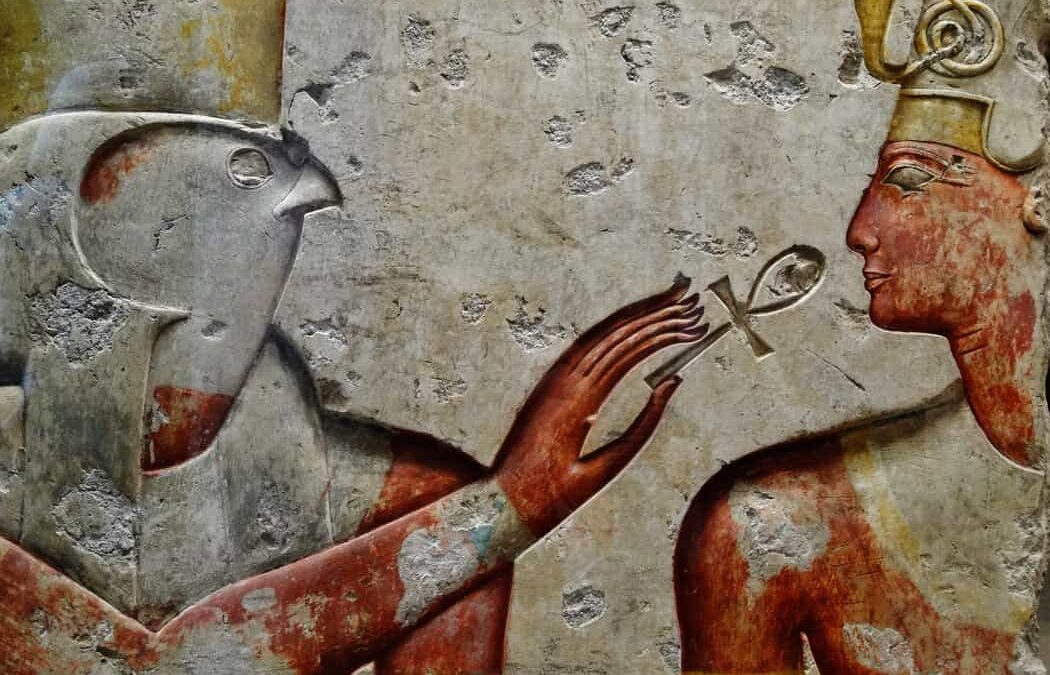The ankh, often referred to as the “key of life,” is one of ancient Egypt’s most recognizable and meaningful symbols. With its unique shape—a cross topped with a loop—it holds a profound place in Egyptian culture and spiritual belief systems.
Origins and Significance
Though the precise origin of the ankh remains partly mysterious, it is known to have been in use in ancient Egypt as far back as the Predynastic Period (c. 3100-2686 BC). The ankh’s meaning is layered, often signifying life, abundance, and eternal existence, making it a powerful emblem in Egyptian iconography.
Symbol of Life Everlasting
The ankh is frequently seen as a representation of eternal life and renewal. Its loop, thought to symbolize eternity, is connected to the crossbar, which may denote the mortal world. Together, they remind us of the Egyptian belief that earthly existence is part of a greater, unending cycle of life and afterlife.
Religious Connotations
Many Egyptian gods are depicted holding the ankh, particularly deities associated with life, death, and rebirth, such as Osiris, the god of the afterlife, and Hathor, the goddess of love and nurturing. Temple reliefs and carvings often show gods holding or bestowing the ankh upon pharaohs, signifying the divine gift of life.
Funerary Role
In ancient Egyptian funerary practices, the ankh held special importance. Ankhs were sometimes placed on or near the heart of the deceased to ensure a safe passage to eternal life. It was also commonly incorporated into amulets and jewelry designed for burial, reflecting hopes of an everlasting afterlife.
Artistic and Architectural Presence
The ankh is seen abundantly in Egyptian art, especially in the hands of pharaohs or gods on statues and wall carvings. Its influence extended to temple and tomb architecture, where it symbolized protection and the promise of life beyond death.
A Protective Amulet
For the ancient Egyptians, the ankh also served as a protective amulet, believed to attract positive energies and shield the wearer from harm. Amulets shaped like ankhs were commonly worn as talismans, valued for their association with divine strength.
A Symbolic Legacy
Even after ancient Egypt’s decline, the ankh continued to be revered. It spread to other cultures and found a place in various spiritual and mystical practices, symbolizing life and continuity.
Modern Interpretations
Today, the ankh remains a powerful symbol, often representing life and vitality. It appears in fashion, jewelry, and is embraced by spiritual and esoteric groups worldwide.
As the “key of life,” the ankh endures as a potent icon, offering insights into the spiritual depth of ancient Egypt and continuing to inspire with its timeless message of life, strength, and renewal.
The Ankh: Ancient Egypt’s Symbol of Life
The ankh, also known as the “key of life,” is a hieroglyphic symbol deeply woven into the tapestry of ancient Egyptian spirituality and symbolism. Beyond representing the verb “to live” or the noun “life,” the ankh conveys complex ideas about existence, the divine, and eternity.
Linguistic and Symbolic Meanings
In everyday texts, the ankh denotes life in its straightforward sense. However, in spiritual and ceremonial contexts, its significance is far deeper. It embodies the divine essence of life, symbolizing both eternal existence and a connection to higher realms. Often depicted in scenes where deities present it to pharaohs, the ankh reinforces the divine link between the ruler and the gods.
The “Breath of Life” Symbolism
In Egyptian art, the ankh is often placed near the nostrils, symbolizing the “breath of life.” In some depictions, people from allied nations petition the Egyptian king for this “breath of life,” underscoring its sacred, life-giving power. The placement and context reinforce the ankh as a conduit for divine vitality and protection.
Connection to Water and Purification
Water, essential for all forms of life, is closely tied to the symbolism of the ankh. During purification rites, gods are shown pouring ankhs over the king from sacred vessels, symbolizing eternal life and renewal. This link between the ankh and life-giving water appears frequently in temple reliefs, enhancing its association with regeneration and continuous life.
Interpretations as Mirror and Path
As a hieroglyph, the ankh may also represent a copper mirror, which was thought to capture divine light, further connecting it to Hathor, the goddess of love and the stars. Another interpretation sees the ankh as resembling a sandal strap, a symbol of life as a journey. The well-crafted sandal and secure strap reflect the idea of a guided path through existence.
The Ankh in Amulets and Symbolic Connections
Worn as an amulet, the ankh was often paired with other powerful symbols like the scarab, symbolizing the regenerative god Kheper, and the was scepter, representing strength. Together, these symbols illustrate the Egyptians’ holistic view of life as a balance of vitality, eternal existence, and divine connection.








